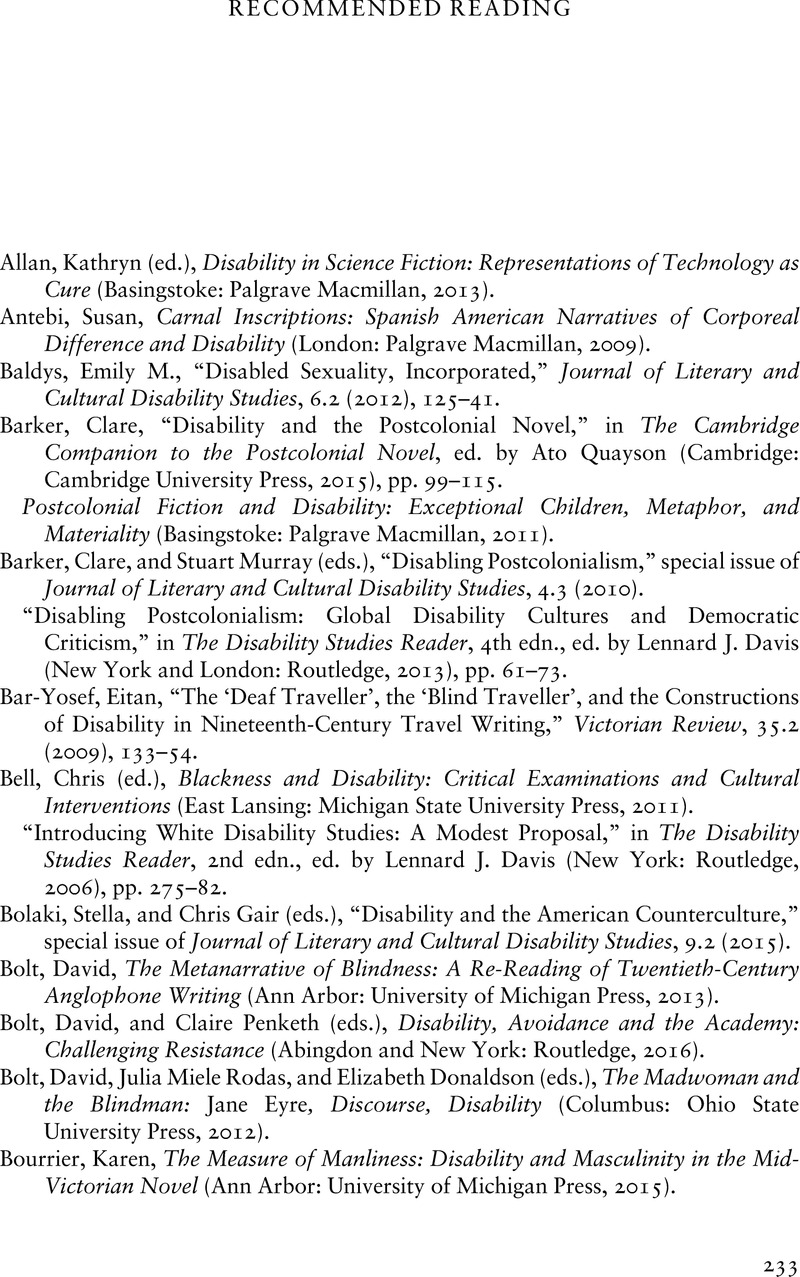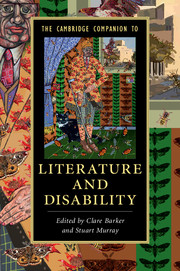Book contents
- The Cambridge Companion to Literature and Disability
- The Cambridge Companion to Literature and Disability
- Copyright page
- Contents
- Contributors
- Acknowledgments
- Chronology of Literary and Cultural Disability Studies
- 1 Introduction
- Part I Across Literatures
- Part II Across Critical Methods
- Recommended Reading
- Index
- Cambridge Companions to …
- References
Recommended Reading
Published online by Cambridge University Press: 05 December 2017
- The Cambridge Companion to Literature and Disability
- The Cambridge Companion to Literature and Disability
- Copyright page
- Contents
- Contributors
- Acknowledgments
- Chronology of Literary and Cultural Disability Studies
- 1 Introduction
- Part I Across Literatures
- Part II Across Critical Methods
- Recommended Reading
- Index
- Cambridge Companions to …
- References
Summary

- Type
- Chapter
- Information
- The Cambridge Companion to Literature and Disability , pp. 233 - 242Publisher: Cambridge University PressPrint publication year: 2017

